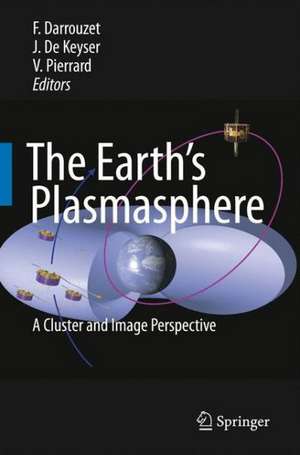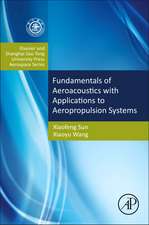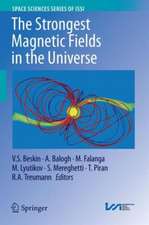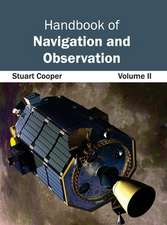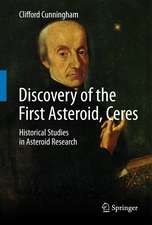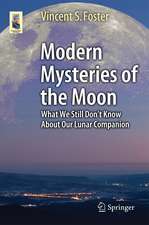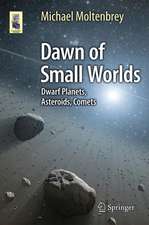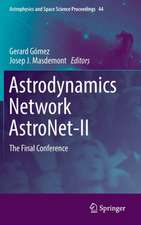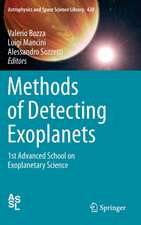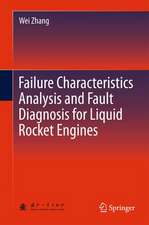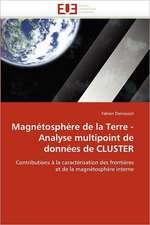The Earth's Plasmasphere: A CLUSTER and IMAGE Perspective
Editat de Fabien Darrouzet, Johan de Keyser, Viviane Pierrarden Limba Engleză Hardback – sep 2009
| Toate formatele și edițiile | Preț | Express |
|---|---|---|
| Paperback (1) | 1108.19 lei 6-8 săpt. | |
| Springer – 22 aug 2016 | 1108.19 lei 6-8 săpt. | |
| Hardback (1) | 1117.03 lei 6-8 săpt. | |
| Springer – sep 2009 | 1117.03 lei 6-8 săpt. |
Preț: 1117.03 lei
Preț vechi: 1362.23 lei
-18% Nou
Puncte Express: 1676
Preț estimativ în valută:
213.81€ • 232.32$ • 179.72£
213.81€ • 232.32$ • 179.72£
Carte tipărită la comandă
Livrare economică 22 aprilie-06 mai
Preluare comenzi: 021 569.72.76
Specificații
ISBN-13: 9781441913227
ISBN-10: 144191322X
Pagini: 270
Ilustrații: IV, 296 p.
Dimensiuni: 155 x 235 x 23 mm
Greutate: 0.68 kg
Ediția:2009
Editura: Springer
Colecția Springer
Locul publicării:New York, NY, United States
ISBN-10: 144191322X
Pagini: 270
Ilustrații: IV, 296 p.
Dimensiuni: 155 x 235 x 23 mm
Greutate: 0.68 kg
Ediția:2009
Editura: Springer
Colecția Springer
Locul publicării:New York, NY, United States
Public țintă
ResearchDescriere
James L. Burch·C. Philippe Escoubet Originally published in the journal Space Science Reviews, Volume 145, Nos 1–2, 1–2. DOI: 10. 1007/s11214-009-9532-7 © Springer Science+Business Media B. V. 2009 The IMAGE and CLUSTER spacecraft have revolutionized our understanding of the inner magnetosphere and in particular the plasmasphere. Before launch, the plasmasphere was not a prime objective of the CLUSTER mission. In fact, CLUSTER might not have ever observed this region because a few years before the CLUSTER launch (at the beginning of the 1990s), it was proposed to raise the perigee of the orbit to 8 Earth radii to make multipoint measu- ments in the current disruption region in the tail. Because of ground segment constraints, this proposal did not materialize. In view of the great depth and breadth of plasmaspheric research and numerous papers published on the plasmasphere since the CLUSTER launch, this choice certainly was a judicious one. The fact that the plasmasphere was one of the prime targets in the inner magnetosphere for IMAGE provided a unique opportunity to make great strides using the new and comp- mentary measurements of the two missions. IMAGE, with sensitive EUV cameras, could for the rst time make global images of the plasmasphere and show its great variability d- ing storm-time. CLUSTER, with four-spacecraft, could analyze in situ spatial and temporal structures at the plasmapause that are particularly important in such a dynamic system.
Cuprins
Preface.- Foreword.- CLUSTER and IMAGE: New Ways to Study the Earth’s Plasmasphere.- Plasmaspheric Density Structures and Dynamics: Properties Observed by the CLUSTER and IMAGE Missions.- Electric Fields and Magnetic Fields in the Plasmasphere: A Perspective from CLUSTER and IMAGE.- Advances in Plasmaspheric Wave Research with CLUSTER and IMAGE Observations.- Recent Progress in Physics-Based Models of the Plasmasphere.- Augmented Empirical Models of Plasmaspheric Density and Electric Field Using IMAGE and CLUSTER Data.
Textul de pe ultima copertă
The Earth's Plasmasphere reviews the state of the art in plasmaspheric science based on the modern observations provded by ESA's CLUSTER and NASA's IMAGE spacecraft. The plasmasphere, discovered at the beginning of the space age, has remained largely unexplored territory. Now, with innovative observational techniques, new light is being shed on this key region of the magnetosphere. This book sketches the emerging overall picture of a highly structured plasma, sculpted by the ever-changing electromagnetic fields that result from the interaction of the solar wind with the magnetosphere.
The Earth's Plasmasphere, written by an international group of scientists representative of the world-wide community, is aimed at researchers and graduate students with an interest in magnetospheric physics, space plasma physics and geophysics.
The Earth's Plasmasphere, written by an international group of scientists representative of the world-wide community, is aimed at researchers and graduate students with an interest in magnetospheric physics, space plasma physics and geophysics.
Caracteristici
Compiles insights gained from the most recent space missions that study the plasmasphere
First book dedicated to the plasmasphere in a decade
Written by an international group of scienticsts representative of the world-wide community
First book dedicated to the plasmasphere in a decade
Written by an international group of scienticsts representative of the world-wide community
